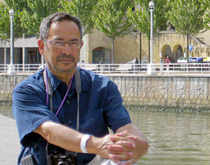The “Transfermium Wars” were possibly the least-known front of the Cold War, with Russian and Western scientists battling over who had discovered several “ultraheavy” elements at the bottom of the periodic table of elements. From the 1960s into the 1990s, the periodic table—the grand chart that shows the order of the chemical building blocks of the known universe—showed different names for these manmade elements, depending on which country it was printed in.

A bystander in the Transfermium Wars, Carnegie Mellon nuclear chemist Paul Karol, believed that the physics establishment had badly bungled the controversy, and he said so in letters he sent to 40 different national scientific unions. “I was ticked,” Karol recalls. “They succumbed to political pressure.”
For his trouble, Karol in 1999 was given the chair of a new body, the Joint Working Party on the Discovery of New Elements.
The JWP, staffed with physicists and nuclear chemists worldwide, determines whether an element has been discovered, and if so, who got there first.
In June 2011, Karol’s JWP announced it had confirmed the discovery of two new elements, temporarily named ununquadium 114 and ununhexium 116, by a joint team of former rivals from Russia and the United States. Why the team effort from once-bitter foes? “These [experiments] have gotten so fancy and expensive,” Karol notes, “that no single research group is able to convince its government to fund the whole thing.”
Although you shouldn’t expect to see these new elements in your home anytime soon, their creation advances not only chemistry and physics, but also computer science and engineering as well. The useful outcomes of this research are often not so much in the discovery (which Karol likens to finding new planets) as they are in the new techniques developed for the chase.
—William Abernathy



